ARBIT - Paper Prototyping an AR brainstorming tool
Towards the end of the Spring Semester in 2019, two classmates of mine (Bhawna Soni and Mayura Datar) and I decided to work on a project about designing an application to help fellow design students conduct brainstorming and ideations sessions using Head Mounted Augmented Reality.
Most design brainstorming and ideation sessions involve non-digital media - whiteboards, chart papers, and post-it notes - and it is often quite time-consuming to digitize all of this physical information for further analysis. We also end up using a lot of paper and stationery along the way.
We named our app A.R.B.I.T. - the Augmented Reality Brainstorming & Ideation Tool - and hoped to make something that looked a little like this -
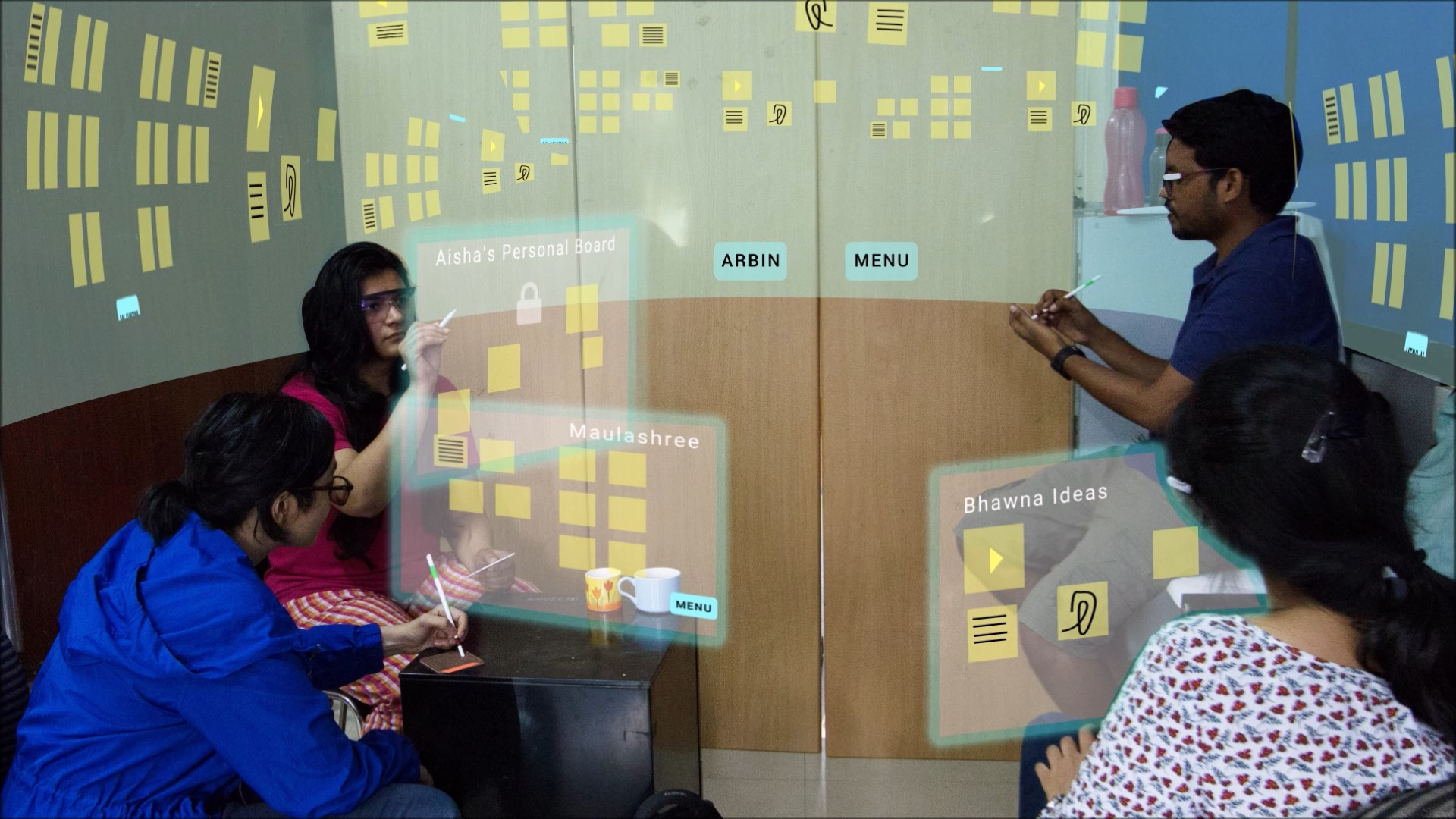
At that time however, none of us had the technical expertise required to develop AR apps, nor was there enough time to learn how to do that within the duration of the course (which was about 2 weeks long).
The idea of using paper prototypes for 2D interfaces is quite a common one, and we thought it might be interesting to try and extend that to 3D and AR apps as well.
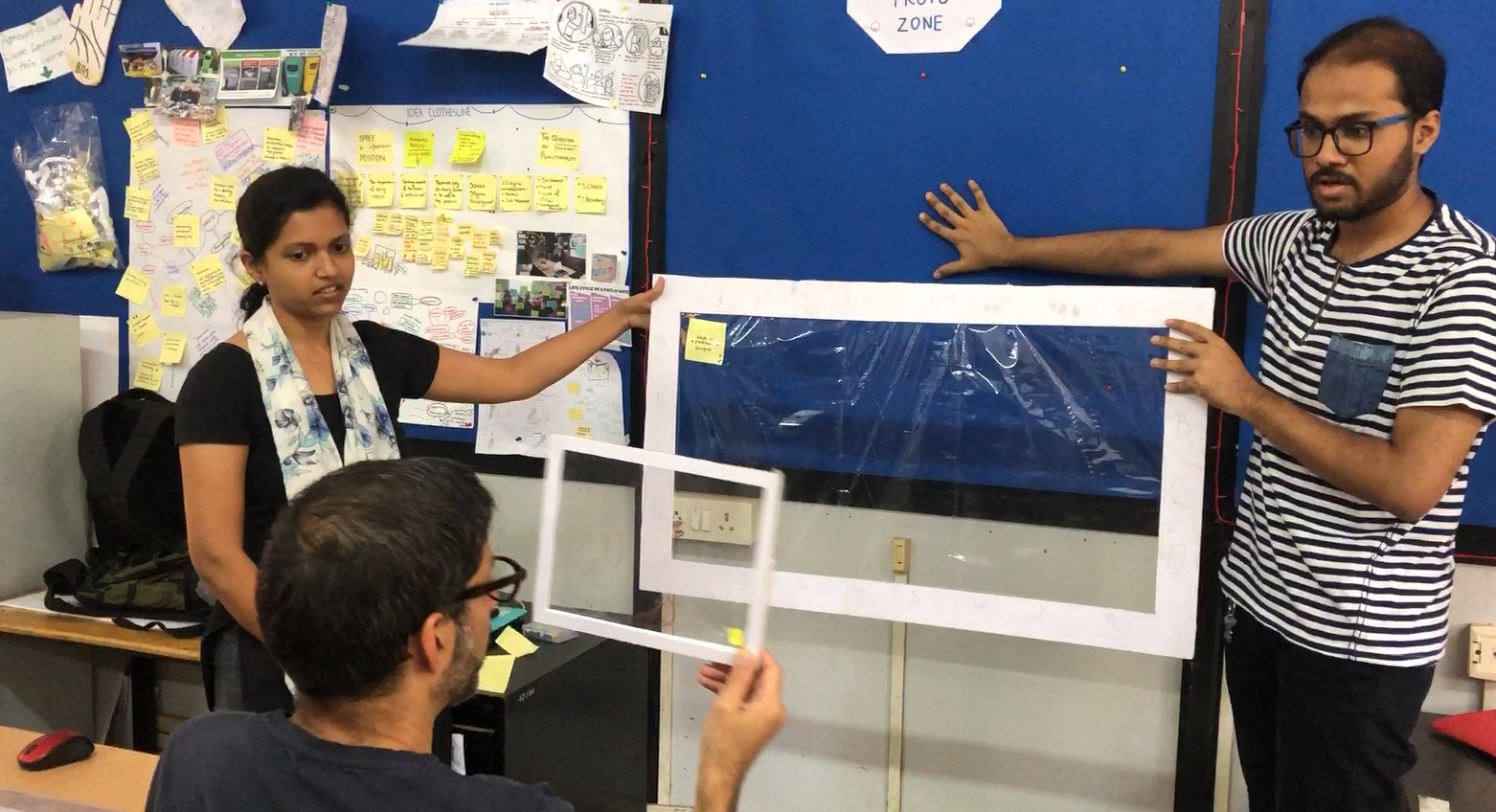
So over the course of those 2 weeks, we ended up designing an experience similar to a choose-your-own-adventure live drama, where the three of us would physically move around with a variety of paper and cardboard AR interface elements, in response to user actions while working with our app.
The system involved a Head-mounted AR Display (for which we used some protective lab glasses), a marker-based Stack that would contain an infinite supply of AR Post-its, and a Stick or a pen that could be used to write on the AR Post-its and interact with the interface elements. We used a combination of paper, cardboard, sunboard, and wooden sticks to help build the props required for the AR interface.
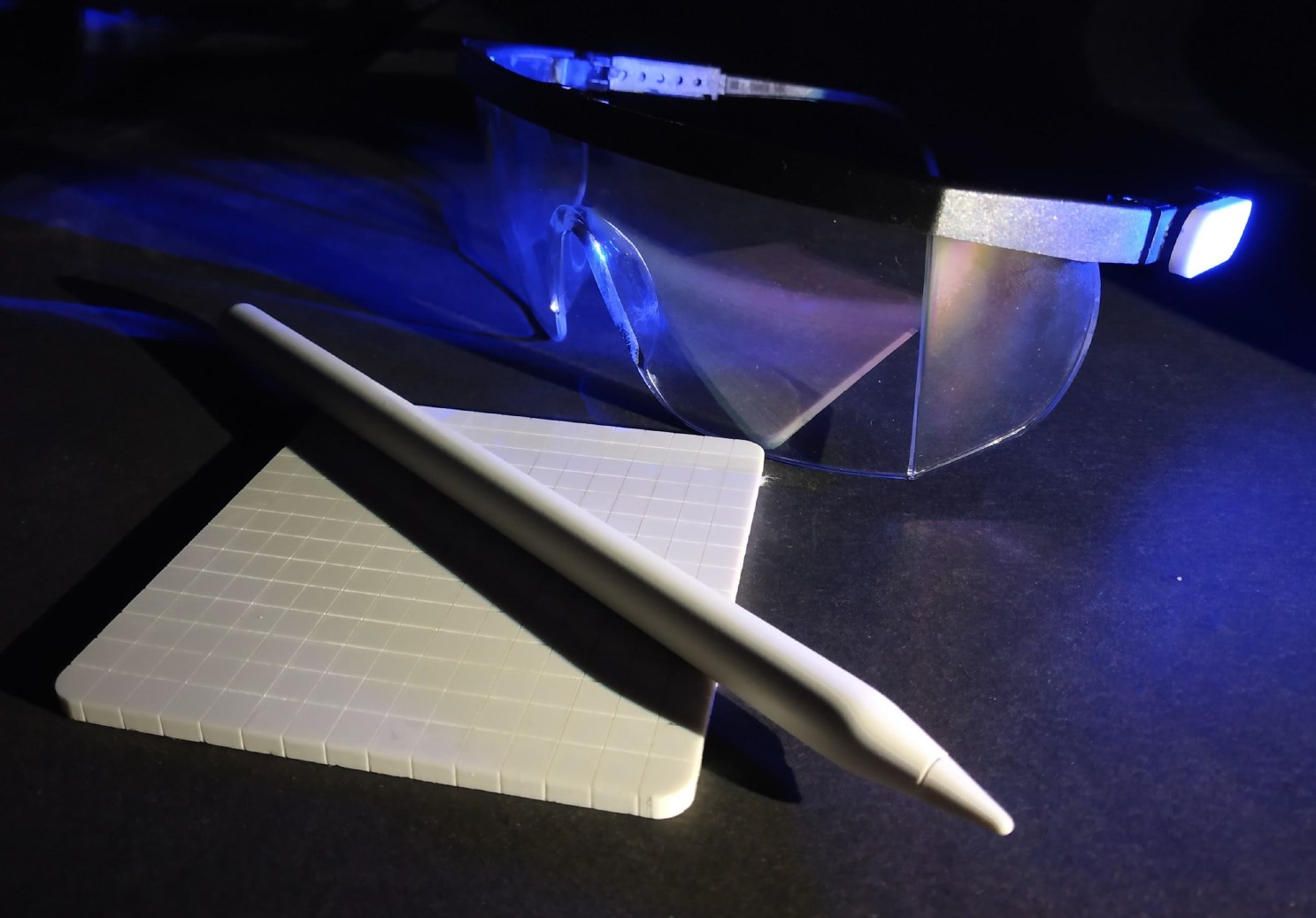

Once we were ready with the basic functions of the app, and the props/interface elements to go with it, we prepared scripts and conducted live-testing sessions with a number of our batchmates.
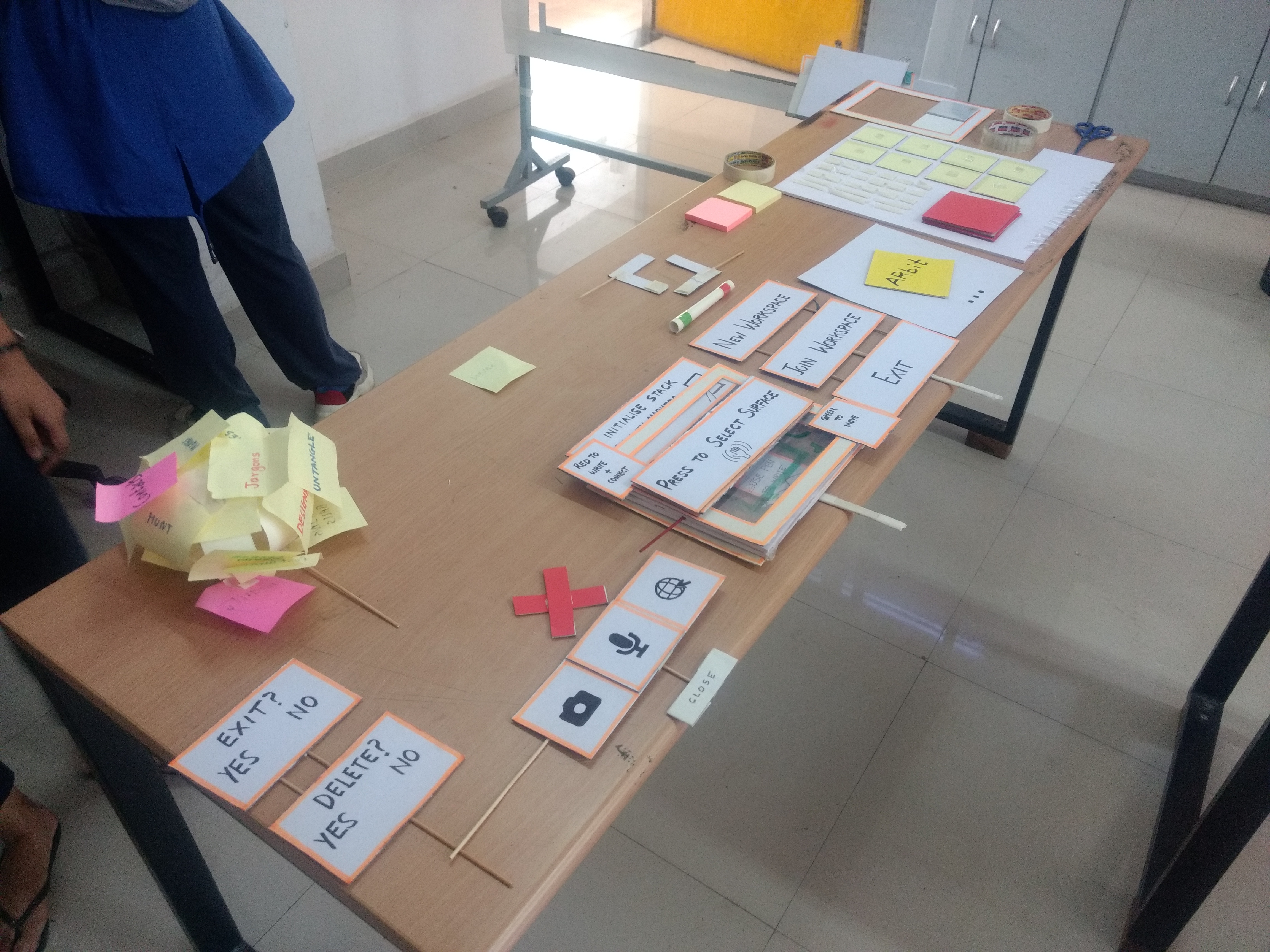
Here are a few GIFs and images of how we went about demonstrating this paper prototype of A.R.B.I.T. :
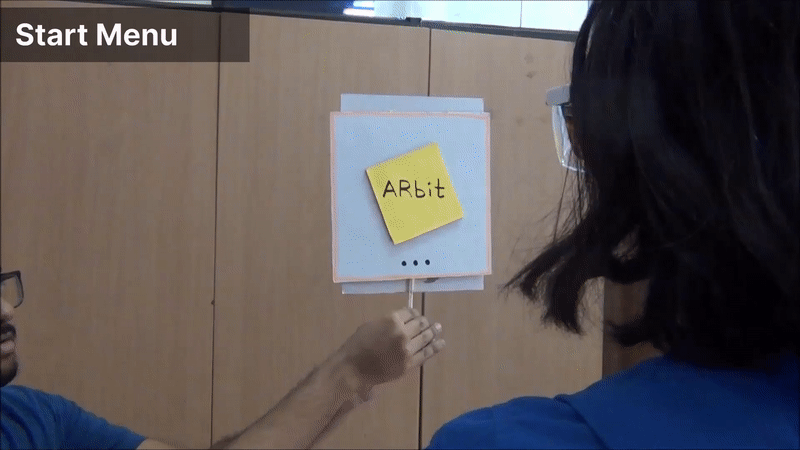
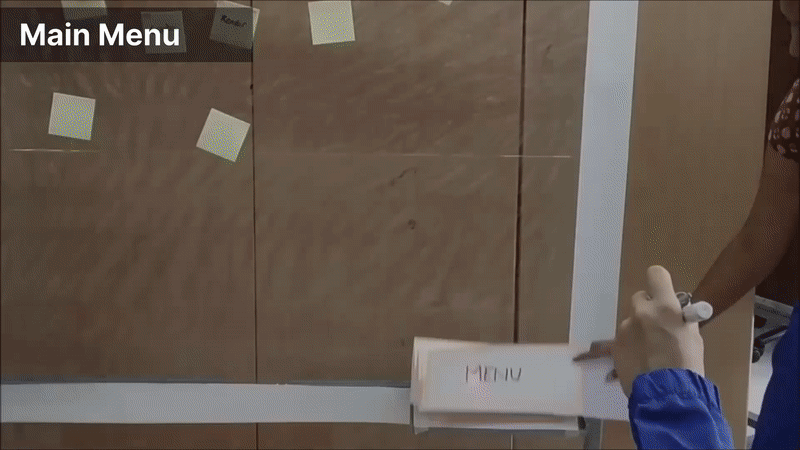
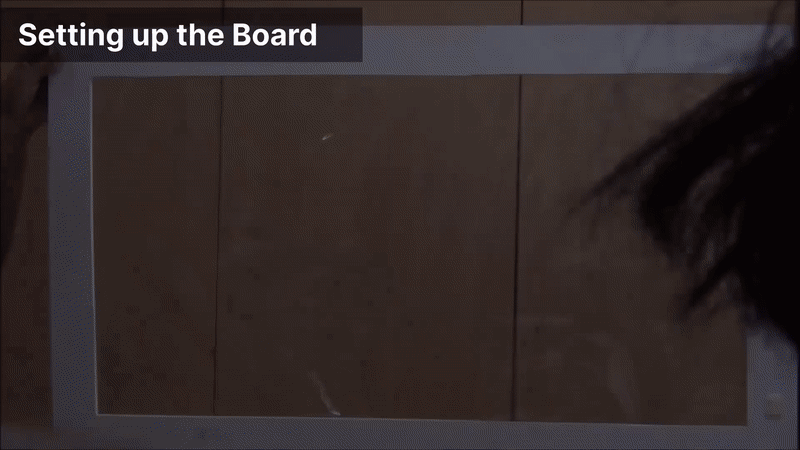
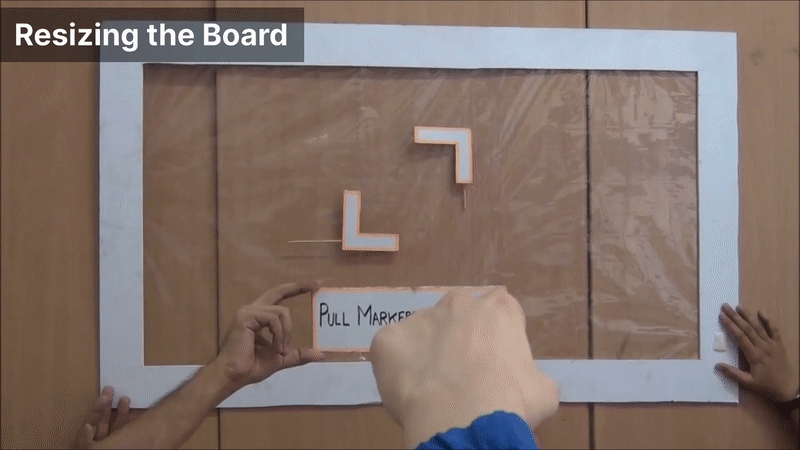
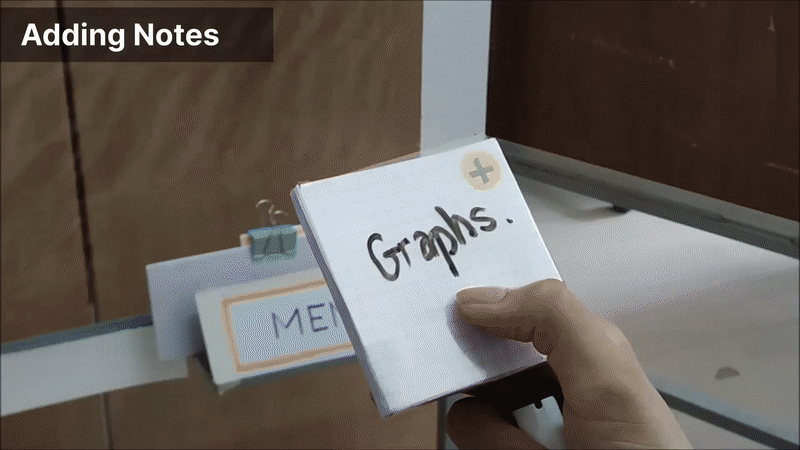
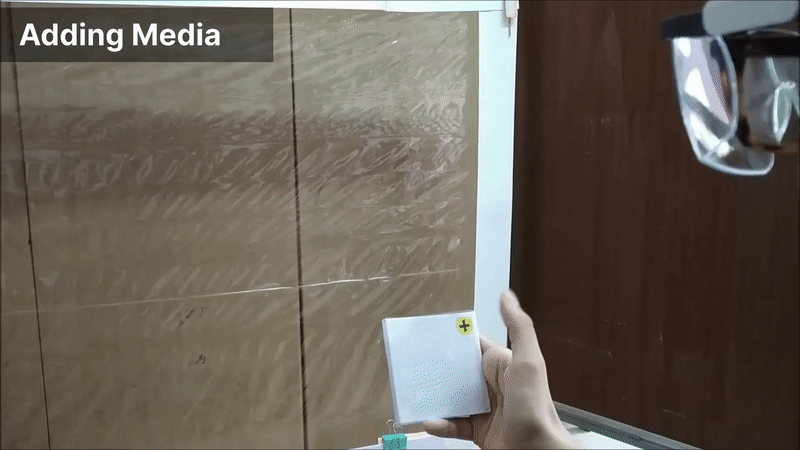
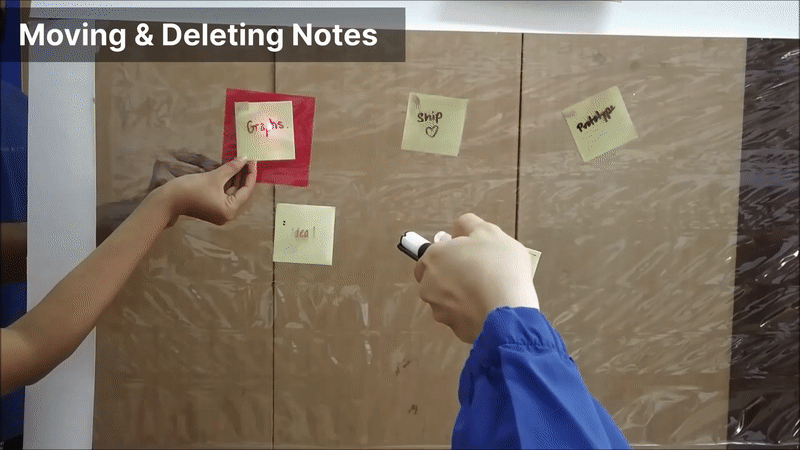
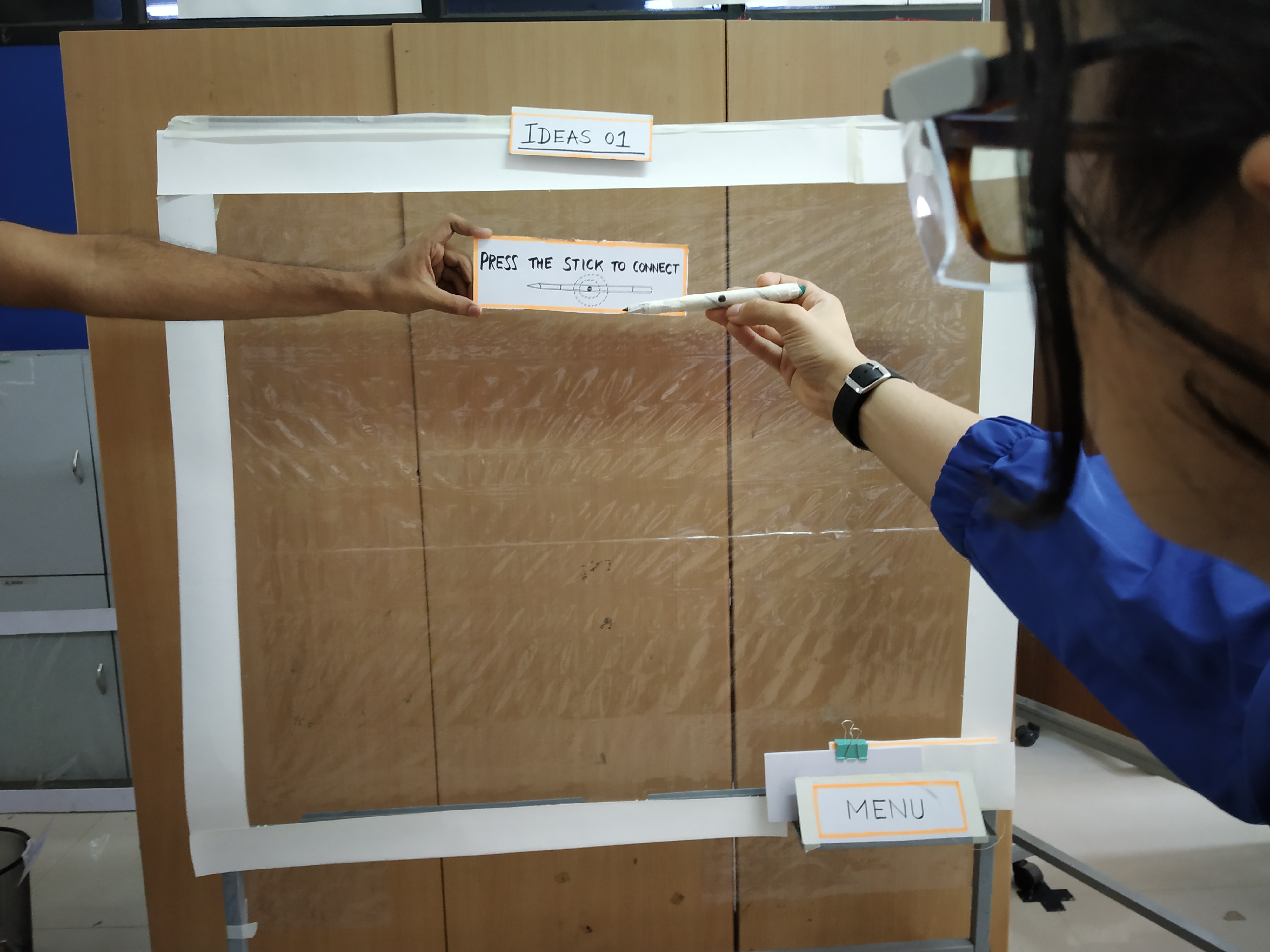
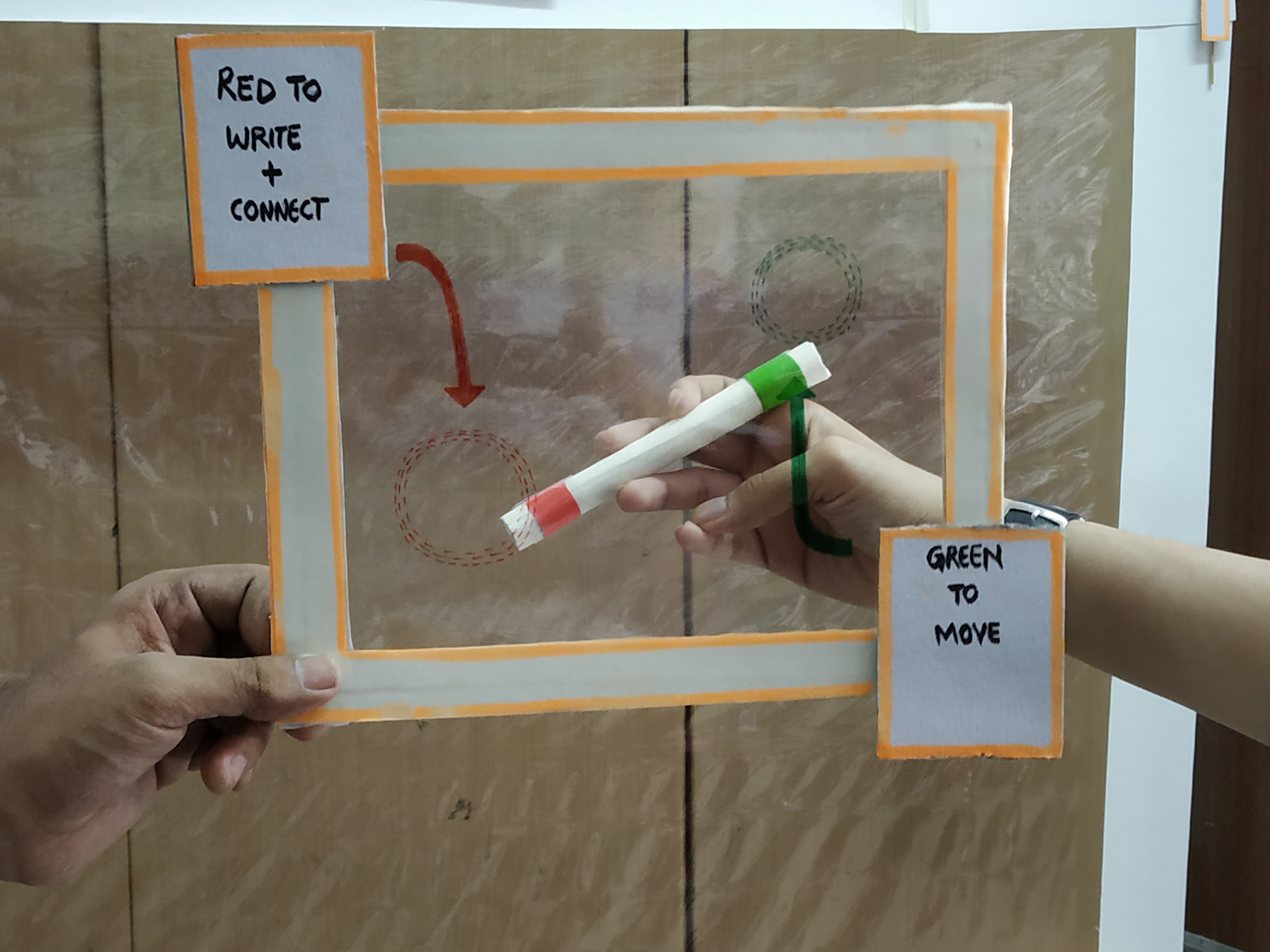
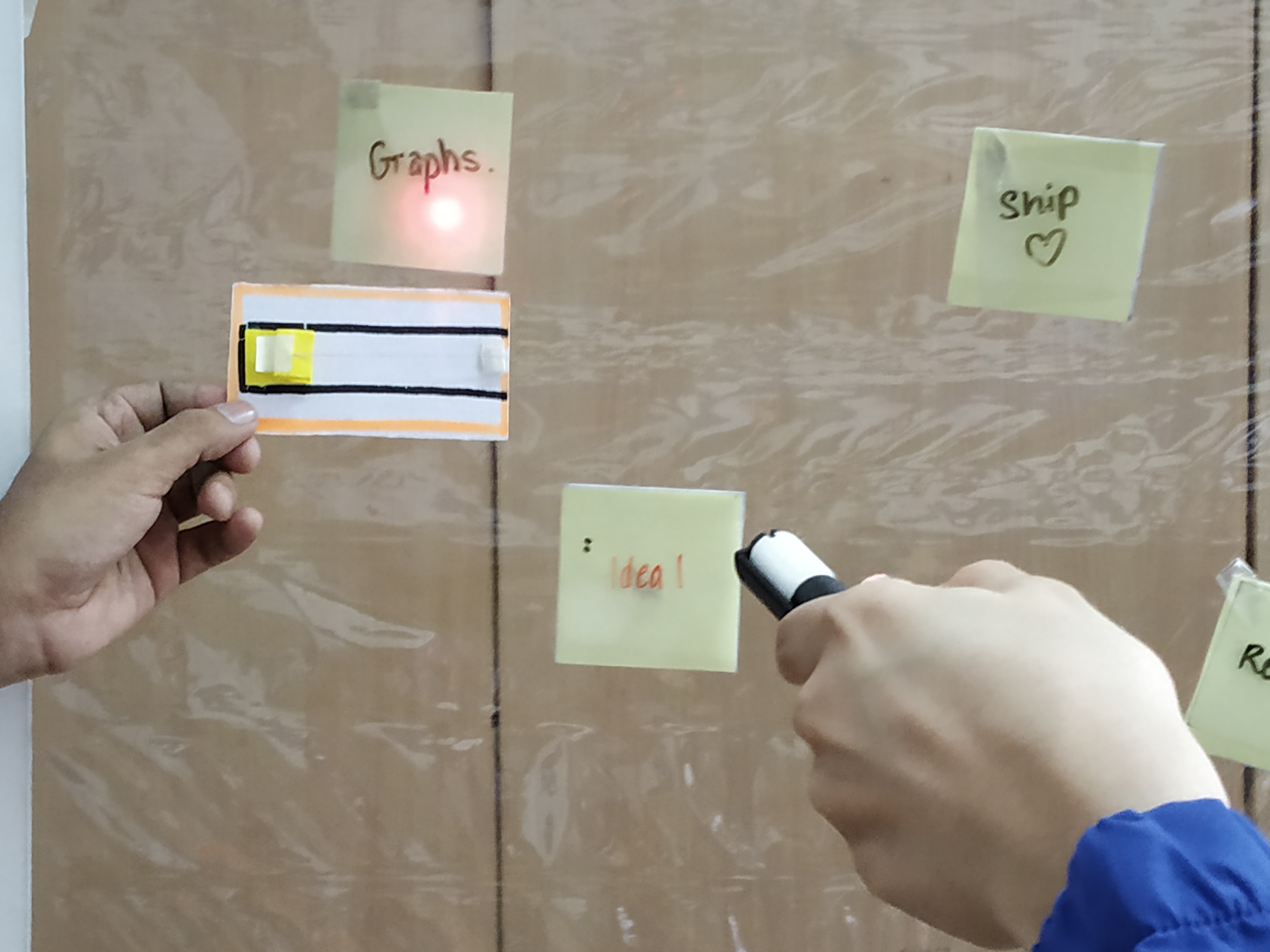
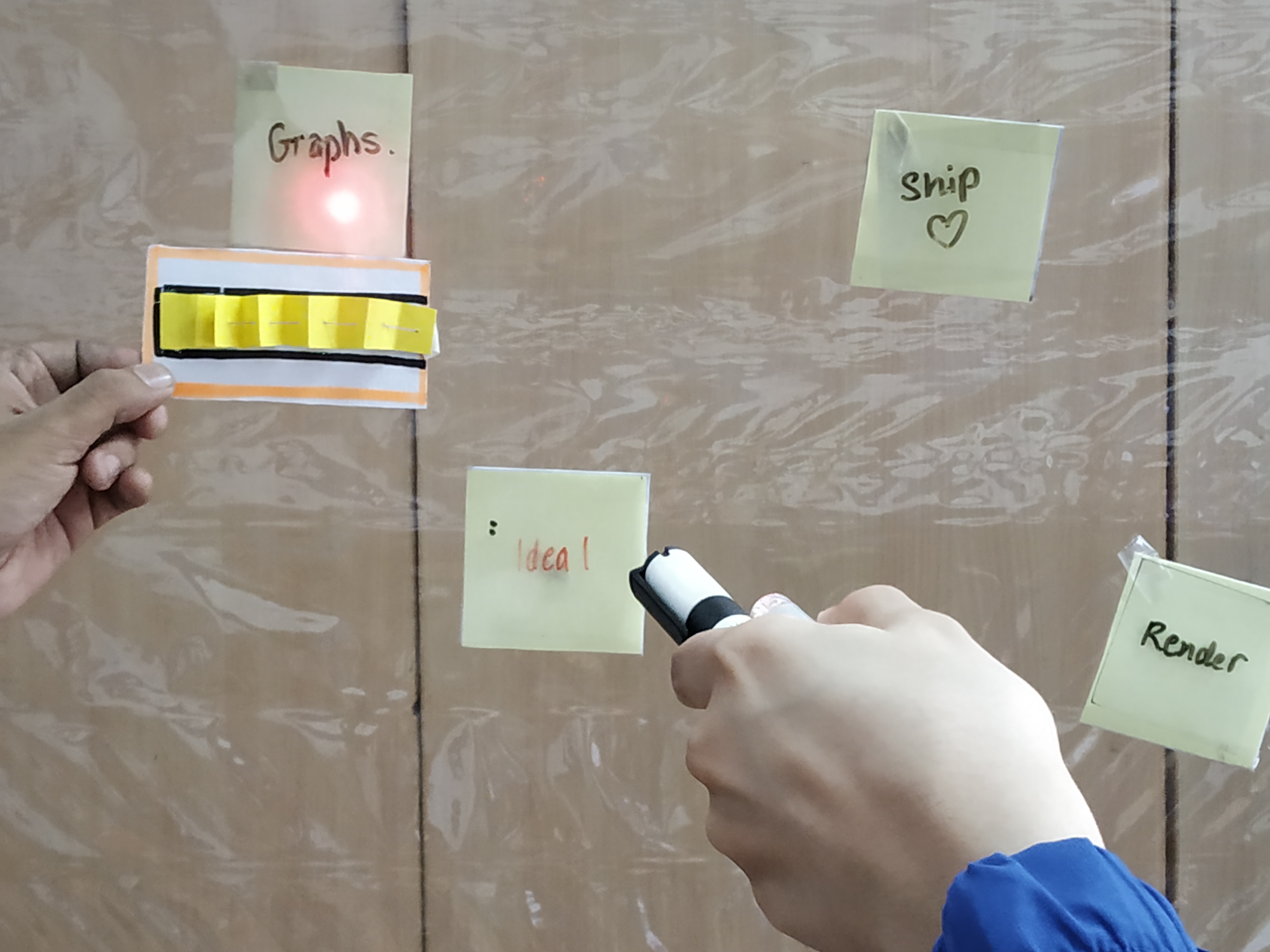
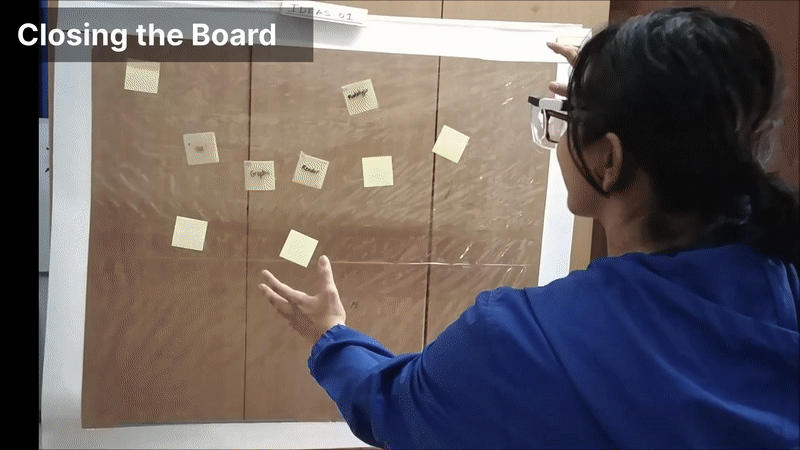
We might have used up much more paper and cardboard than we had set out to save, but the project was a really fun experience.